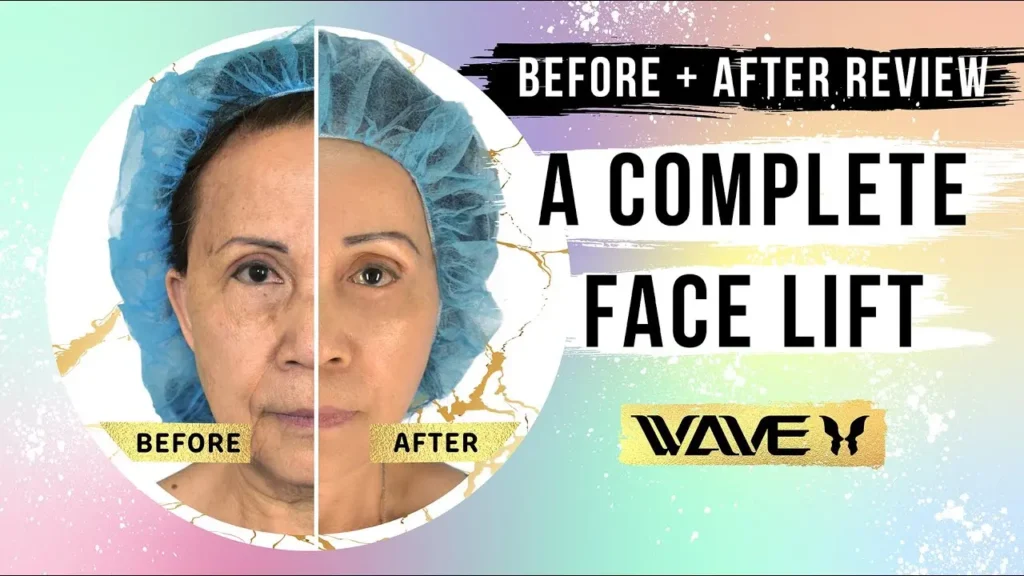Having an eyelid that droops affects your appearance and could impact your self-esteem. This condition is called ptosis, and it can lead to vision problems and discomfort, all of which can combine to affect your quality of life. If you have this condition, learn more about what it is, what causes it, and most importantly, how to fix ptosis.
What Is Ptosis?
Ptosis is a medical condition in which the upper eyelid of one or both eyes sags, droops, or falls over the eye. This can lead to a partially obstructed field of vision and can be a cosmetic concern as well.
Eyelid ptosis can affect one or both eyes. It can be worse in one eye than in the other and can impact both the upper and lower eyelids.
Most of the time, people can tell if they have ptosis from the drooping of the eyelid, but there are also other signs. Ptosis symptoms include:
- Increased tearing
- Tiredness and achiness around the eyes
- Excessive rubbing of the eyes
- Decreased vision.
It’s estimated that about 11% of adults over 50 have ptosis. Other names for the condition include blepharoptosis, palpebral ptosis, and droopy eyelid.
Types of Ptosis
There are two main types of ptosis: congenital and acquired. Your diagnosis will help identify the ptosis treatment most beneficial to your condition.
Congenital Ptosis
Congenital ptosis refers to an inherited condition. It may not be immediately noticeable at birth, but indicators can start to show within a few months. It can be unilateral or bilateral.
Acquired Ptosis
Acquired ptosis typically occurs in adults. It can develop if the levator muscle weakens or separates from your eyelid. One type of acquired ptosis is involutional ptosis, in which you experience a varying degree of drooping of the upper lid.
What Causes Ptosis?
There are many causes of ptosis, depending on the type you have. Babies born with congenital ptosis have fat and fibrous tissues in the eyelid muscle instead of the standard muscle fibers. Adults with acquired ptosis, however, can develop the condition for a number of reasons.
Muscle Weakness
If the ligaments or muscles that raise your eyelids are weakened because of illness or injury, they have trouble preventing the eyelid from drooping.
Age-Related Changes
As you age, the muscles around your eyes can grow weaker while your skin stretches and begins to droop. Ptosis can also occur if you experience age-related descent of the brow.
Neurological Conditions
A neurological condition like Myasthenia Gravis, a condition in which antibodies destroy communication between nerves and muscles, can start as ptosis before progressing to other symptoms. Horner syndrome, a rare condition that affects your eye and the surrounding tissues on one side of the face, can also cause ptosis.
Injury or Trauma
If your levator muscles were damaged in any way from a blow to the eye or other injury, you can experience ptosis. That is called traumatic ptosis. In some cases, a previous injury could cause scarring that weighs the muscle down, leading to a drooping eyelid.
Tumors and Growths
Pituitary, pancreatic, and brain tumors can also cause ptosis, though these are rarer causes. Usually, it presents as unilateral ptosis. Some people also experience mechanical ptosis, when an eyelid tumor or growth causes the eyelid to become too heavy for the muscle to lift.
Eyelid Stretching
If you’ve had eye surgery in the past, the instruments that hold the eye open could have led to eye stretching. As you age, your eyelid also naturally stretches. That can affect the muscles and skin.
Allergic Reactions
Swelling and inflammation from an allergic reaction can result in a droopy eyelid. This swelling can weigh down the eyelid muscles, making it difficult for the eyes to stay fully open.
Contact Lens Wear
Hard contact lens wearers, especially women, have a 20 times increased risk of developing ptosis. It stems from the weakening of the levator muscle caused by wearing lenses over many years.
Genetic Factors
The development of the muscles, nerves, and ligaments all play a role in whether someone has ptosis. Weakness of the external eye muscles is considered genetic.
Unknown Causes
For some people, it can be challenging to determine what is causing ptosis. It is described as idiopathic when no specific underlying cause can be identified.
How to Fix Ptosis
Left untreated, ptosis can worsen over time and lead to other complications. It could affect vision development in children, and in adults with acquired ptosis, it can cause astigmatism and amblyopia.
Surgical and non-surgical ptosis treatments can help you get relief from this condition.
Surgical Options
For many people, surgery offers the best chance of achieving the results they want. It is the only way to tighten the levator muscle and provides a long-lasting and effective solution. Here are some standard surgical procedures for ptosis treatment:
Double Eyelid Surgery
Double eyelid surgery focuses on giving you a wider and more open appearance. For this procedure, the surgeon makes a small incision along the upper eyelid and manipulates the eyelid skin and tissues to find the muscle that lifts your eyelid while also creating an eyelid crease.
We use a specialized suture at Wave Plastic Surgery to set that crease in place and strengthen the levator muscles.
Brow Lift Surgery:
A brow lift surgery removes any excess skin and tissues that can lead to brow drooping and worsen ptosis eye issues. To perform the procedure, the surgeon repositions the underlying muscles and tissues of the eyebrow. That helps brighten the eye area by lifting the soft tissues of the brow.
At Wave Plastic Surgery, we offer an endoscopic brow lift procedure that uses tiny instruments to shift the necessary tissues without requiring large incisions.
Upper Eyelid Surgery
For upper eyelid surgery, the surgeon makes a small incision along the natural folds of the upper eyelid. Then, they remove excess fat, skin, or other tissues that could cause the lid to droop over the eye.
Levator Resection
A levator resection involves shortening the levator muscle. If the ptosis is mechanical, the surgeon can also remove the added weight of a mass and any excess skin.
Frontalis Sling Surgery
If the cause of the ptosis is the levator muscle, a frontalis sling surgery offers the chance to fix it by manipulating the forehead muscle to control the upper eyelid.
Non-Surgical Options
Non-surgical options for ptosis include Botox, which temporarily paralyzes the muscles that cause the drooping. However, that is only effective if you have mild ptosis caused by aging.
Mild ptosis can also be treated in children using eye drops and patches, but they’re not always effective. Congenital ptosis usually results from a problem with the underlying muscle, so non-invasive treatments are usually ineffective.
Schedule a Consultation With Wave Plastic Surgery
Having ptosis can be frustrating and affect your quality of life. At Wave Plastic Surgery, we offer a variety of surgical eye procedures that can help you manage the condition so that you can get that bright-eyed look once more. Call us today to schedule a consultation with our experts.




























